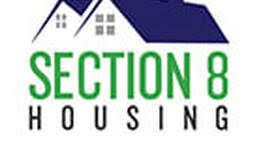Evictions and Public Housing
Not Your Standard Eviction

Public housing (also called Section 8) exists to provide decent and safe rental housing for eligible low-income families, the elderly, and persons with disabilities. Public housing comes in all sizes and types, from scattered single-family houses to high-rise apartments for elderly families. The U.S. Department of Housing and Urban Development (HUD) administers Federal aid to local housing agencies (HAs) that manage the housing for low-income residents at rents they can afford. HUD furnishes technical and professional assistance in planning, developing, and managing these developments. Because federal and state governments control public housing, there are special rules for evicting a person from subsidized housing.
- Assistance for Individuals and families fall into two main categories.
- Voucher Program (a tenant-based subsidy) the tenant may receive a replacement voucher from a public housing authority.
- Subsidized Projects (where the complex, not the tenant, is subsidized) the tenant will not receive a voucher from a public housing authority but, depending on the type of program, can be relocated under other methods or by a tenant protection voucher issued by HUD.
- Suppose a damaged/destroyed housing project does not have existing non-damaged units available. In that case, the Landlord must transfer the contract to another multi-family funded property that will accept the subsidy’s remainder.
- Proper Notice under H-2015-03 (HUD) when a disaster causes the termination of the lease.
- Housing projects must provide notification regarding transfers in the tenant’s primary language and formats for persons with communication disabilities.
- The notice must be provided to each unit in the project. It can be mailed to each tenant and posted in common areas.
- For tenants who choose not to relocate, the Landlord must send notice to that tenant that they may be offered a tenant protection voucher (TPV).
- TPVs ensure there is no displacement of low-income residents due to various actions resulting in loss of subsidy assistance.
The Landlord has filed the eviction. Now what?
- The landlord must terminate the lease for non-payment of rent or lease violations.
- There are additional guidelines for public housing, depending on what type of assistance they are receiving.
- Voucher Program information: https://www.ecfr.gov/cgi-bin/text-idx?SID=96a114018ad3af63748003825545ee13&node=se24.4.982_1310&rgn=div8
- Subsidized Housing Project information: www.ecfr.gov/cgi-bin/text-idx?SID=a8de92727104413d8a8c28cb1d2d56b3&node=24:2.1.1.2.24&rgn=div5
- When the landlord claims breach of lease, the landlord must give the tenant at least a three-day notice to vacate unless the lease allows or requires the landlord to provide a shorter or longer notice to vacate period or the law requires a more extended notice period. For example, if the eviction comes from the Housing Authority, a tenant may be entitled to a 14-day notice. The landlord must demand possession before filing a suit for forcible detainer (eviction).
- For any type of housing arrangement, the notice must be in writing.
- The landlord must give the notice in person or by mail at the premises by:
- personal delivery to the tenant or any person residing in the premises who is at least sixteen years of age,
- personal delivery to the premises by affixing the notice to the inside of the main entry door,
- by regular mail addressed to the premises, or
- by certified mail, return receipt requested addressed to the premises.
- Alternative Delivery Method, Effective, January 1, 2016:
- The landlord is allowed to deliver the notice to vacate by securely affixing it to the outside of the main entry door in a sealed envelope with the tenant’s name, address, and in all capital letters, the words “IMPORTANT DOCUMENT” or substantially similar language. The notice must be delivered not later than 5:00 p.m. The same day they must place a copy in the mail in the same county. This method is only allowed if:
- the residence has no mailbox or has a keyless bolting device, alarm system, or dangerous animal that prevents the landlord from entering.
- The landlord reasonably believes that harm would result from personal delivery to the tenant or a person residing at the residence or from entering the premises to affix the notice to the inside of the main entry door.
- Some other important information to pass on:
- Discuss options with the Landlord (LL). Keeping lines of communication open can prevent litigation.
- There is no self-help eviction. Landlords must file an eviction in JP court.
- A LL cannot tell a person whose home is unreachable because of floodwaters that the person must have his/her personal belongings out of the residence immediately.
- If terminating the lease, remember to ask for a security deposit return and provide a forwarding address.
- Weigh the options.
- There will be less housing for rent after a disaster, so it may be best to keep the lease while repairs are made if the residence or a portion of the home is habitable.
Belinda Martinez/Staff Attorney Lone Star Legal Aid